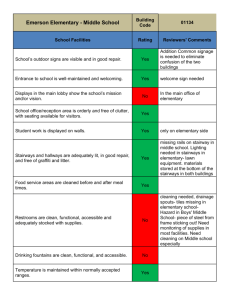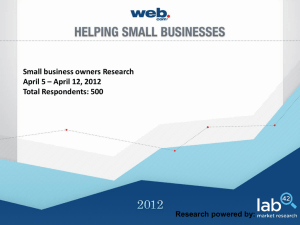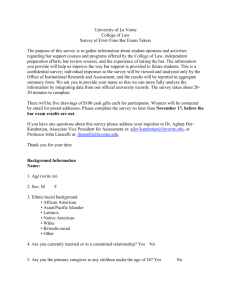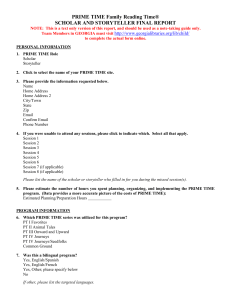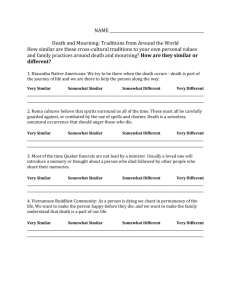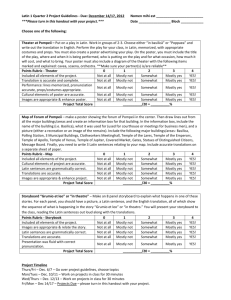Secondary PowerPoint Presentation PowerPoint Presentation
advertisement
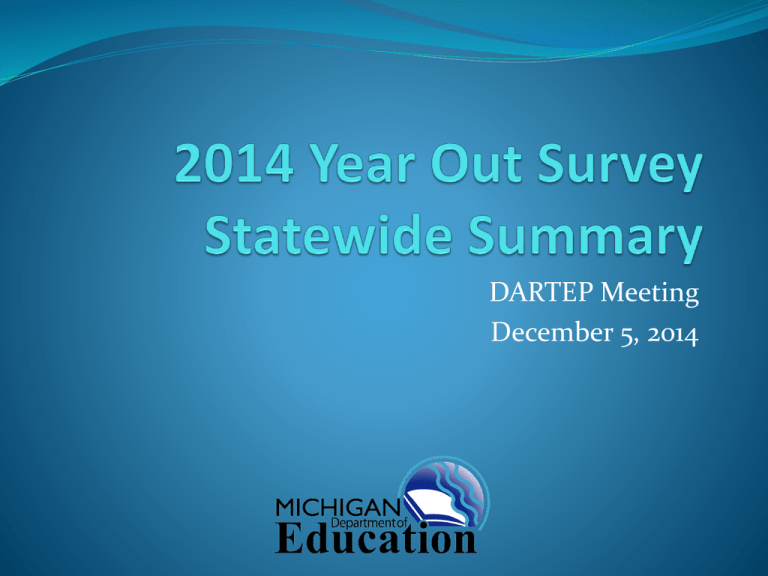
DARTEP Meeting December 5, 2014 Who responded? 4569 invitations sent; 758 unique surveys completed (16.9% statewide response rate) Individual EPI response rates varied widely (Range: 0.0% - 33.3%) 1% 1% 3% 0% Ethnicity American Indian/Alaskan Native Asian Black/African American 95% Native Hawaiian/Pacific Islander White Gender 20% Female Male 80% Who responded? Certificate Type 3% 4% 4% Age 3% 13% Elementary Only 22-25 26-29 10% 30-34 35-39 54% 22% 47% 40% Elementary with Endorsement(s) 40-44 45-49 50 and over Secondary Did they find teaching jobs? Happy with Placement? 21% Found Employment Yes No 79% 22% Still Seeking Employment in Teaching? Yes No 78% 35% 65% Yes No What kinds of teaching jobs did they find? Full-Time Certified Part-Time Certified ParaProfessional Substitute w/ Permit Other Full Academic Year 58.9% (336) 5.1% (29) 2.5% (14) 4.7% (27) 3.5% (20) Less Than Full Academic Year 8.9% (51) 2.3% (13) 1.4% (8) 6.3% (36) 0.4% (2) Less Than One Month 2.1% (12) 1.1% (6) 1.1% (6) 1.6% (9) 0.2% (1) Were they happy with their employment? 9% 13% Secondary (n=355) 19% Elementary with Endorsement (n=306) Found Employment, Happy 5% 12% Elementary Only (n=97) 9% Found Employment, Unhappy 14% 69% Did Not Find Employment, Still Seeking Did Not Find Employment, Not Still Seeking 59% 24% 53% 14% How difficult is it to find a job? Secondary 8% 6% Overall 37% 19% 18% 39% Very Difficult Somewhat Difficult 37% Elementary Only 2% Somewhat Easy Very Easy 11% 36% Elementary + Endorsement 6% 19% 48% 38% 39% 37% How prepared did they feel for job seeking? (n=758, % Strongly/Somewhat Agree) 86%: My program holds a positive reputation among prospective employers. 81%: My program provided opportunities for résumé building. 74%: My program provided opportunities for interview preparation. 68%: My program provided good advice on job placement opportunities. 62%: My program promoted networking for new teachers. 58%: My program supported me in my job search. How prepared did they feel for their jobs? (n=472 % Strongly/Somewhat Agree) 92%: Designing high-quality learning experiences 91%: Applying critical thinking 88%: Organizing the learning environment 85%: Field experiences and clinical practices 82%: Connecting real-world problems and local and global issues 82%: Using technology to maximize student learning 81%: Effective use of assessments and data 73%: Addressing the needs of special populations In what areas did they feel most prepared? (% Strongly/Somewhat Agree) 92%: Use instructional strategies to help students understand key concepts in my content area(s) 92%: Use my knowledge of my content area(s) to design high-quality learning experiences 92%: Create learning environments to support individual and collaborative learning 92%: I feel my teaching experience during the last year was positively affected by the field experiences and clinical practice I had through my preparation program In what areas did they feel least prepared? (% Strongly/Somewhat Agree) 65%: Apply modifications and accommodations based on legal requirements for supporting English language learners 67%: Adapt instructional strategies and resources to support English language learners 72%: Create an online learning environment for students which includes digital content, personal interaction, and assessment


